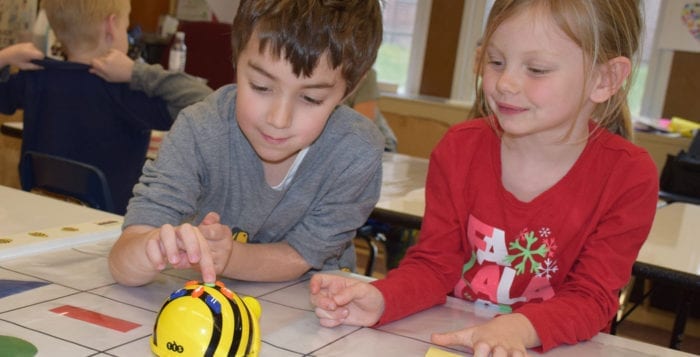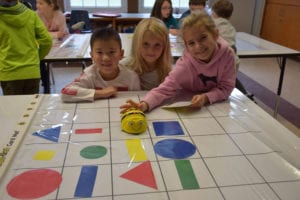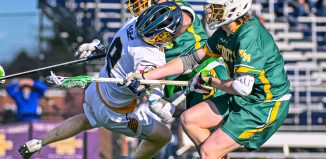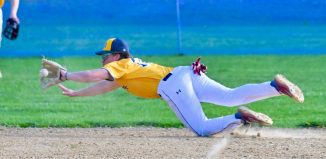
By Andrea Paldy
Whether it is a demonstration from the high school robotics team or honoring 2018 Regeneron Science Talent Search Scholars, recent school board meetings have been a venue to showcase the vast strides the Three Village School District continues to make in science, technology, engineering and math instruction and enrichment.
In recent months, the district’s teachers and information specialists have given presentations explaining how they are helping to prepare students from elementary through high school for the brave new world that’s theirs.
The spotlight is put on the elementary STEM curriculum and the district’s library services. These demonstrate the way Three Village integrates technology into the curriculum as a unit of study, while also using it as a tool for research and growth in other academic disciplines.
Three Village embarked on the first year of its elementary STEM program in the fall of 2015, just as President Barack Obama (D) was signing the STEM Education Act into law. The curriculum, which introduces elementary-aged students to concepts such as aeroponics, coding and robotics, also teaches them about engineering and design.
Speaking at a school board meeting in November, Setauket Elementary’s STEM teacher Gina Varacchi explained how design challenges are embedded into the program to teach students about the design process. Students are given a design goal along with guidelines and constraints, she said. Similar to the scientific method, students must follow certain steps as part of the process. After determining “the problem” and conducting research, they can begin to design, but most important is that students experiment with their design through old-fashioned trial and error. Varacchi said that not only do they learn problem-solving skills, they also learn persistence.

Design projects range from physical construction of marble tracks and bridges to using the online program Tinkercad to design 3D sculptures and containers for 3D printing. Students also learn coding for robots — Bee-Bots for kindergarten through second grade, and Ozobots for third and fourth grade. Additional STEM units include building with littleBits circuits, as well as coding with Scratch.
The district goes further in supporting students’ technological literacy. R.C. Murphy Junior High School information specialist and district library head Betsy Knox said at January’s meeting that the library departments put an emphasis “on teaching information and inquiry skills to students and collaborating with teachers on planning appropriate lessons on research.”
To achieve this mission, the libraries offer Lightbox, a web-based system that provides supplementary lessons in English language arts, science and social studies. It also includes supporting materials such as videos, primary documents, interviews and articles, Knox said. The district has 74 different units that are also accessible to students at home.
Additionally, media specialists help to design curriculum that includes research projects with suggested resources or team-teach lessons on developing thesis statements and providing research-based evidence for support. Nicole Connelly, information specialist at P.J. Gelinas Junior High, said this helps to give students the skills they need to navigate systems to “make informed decisions and become critical thinkers.”
In addition to providing maker spaces and experiences with virtual reality, the district’s libraries, or “information centers,” teach internet safety and provide instruction in online behavior from kindergarten to 12th grade. Ward Melville’s information specialist April Hatcher said the curriculum on “digital citizenship” for grades six through 12 was recently updated and covers cyberbullying, copyrights and plagiarism, social responsibility and identity protection. Lessons on hate speech are also addressed in the high school curriculum, she said.
The district’s media specialists not only support educators with research and curriculum, but also with technology. The library service department has recently submitted grant applications for drones, digital cameras and an outdoor classroom.
But, said Allyson Konczynin information specialist at W.S. Mount Elementary School, even with growing focus on technology, emphasis is still being placed on book selection and literature appreciation.
“Nothing beats seeing a student light up with excitement when they find a book they love,” she said.






